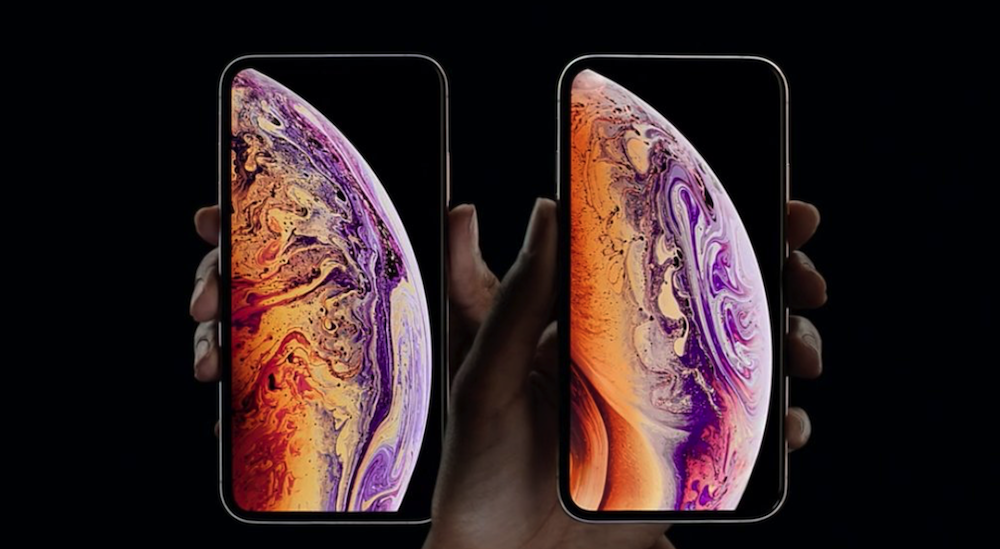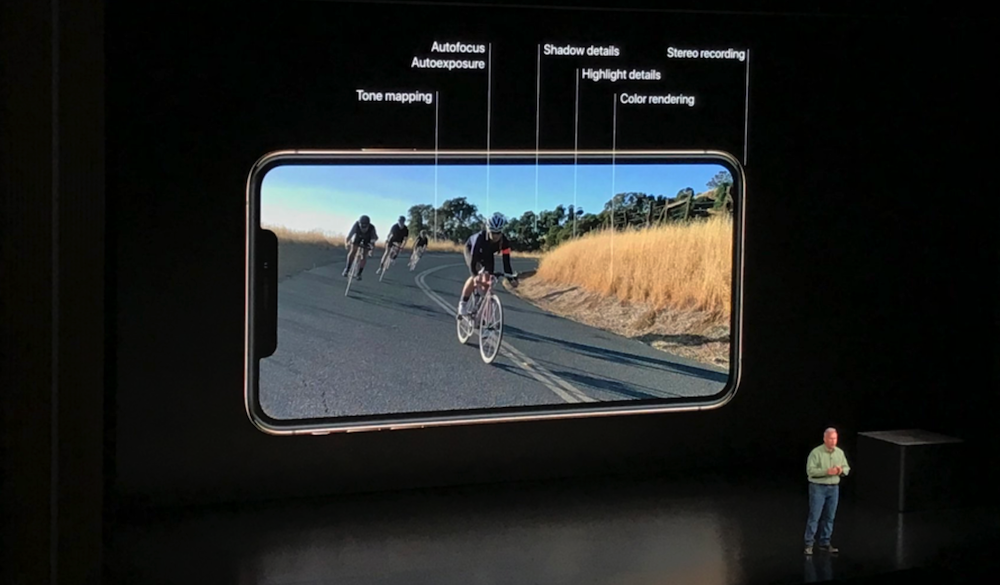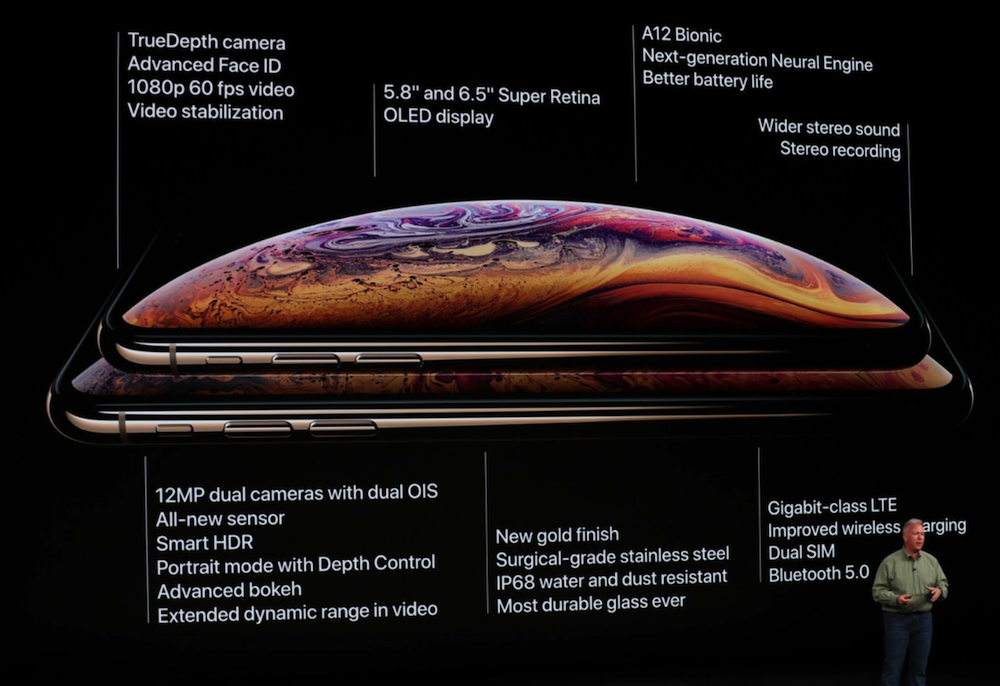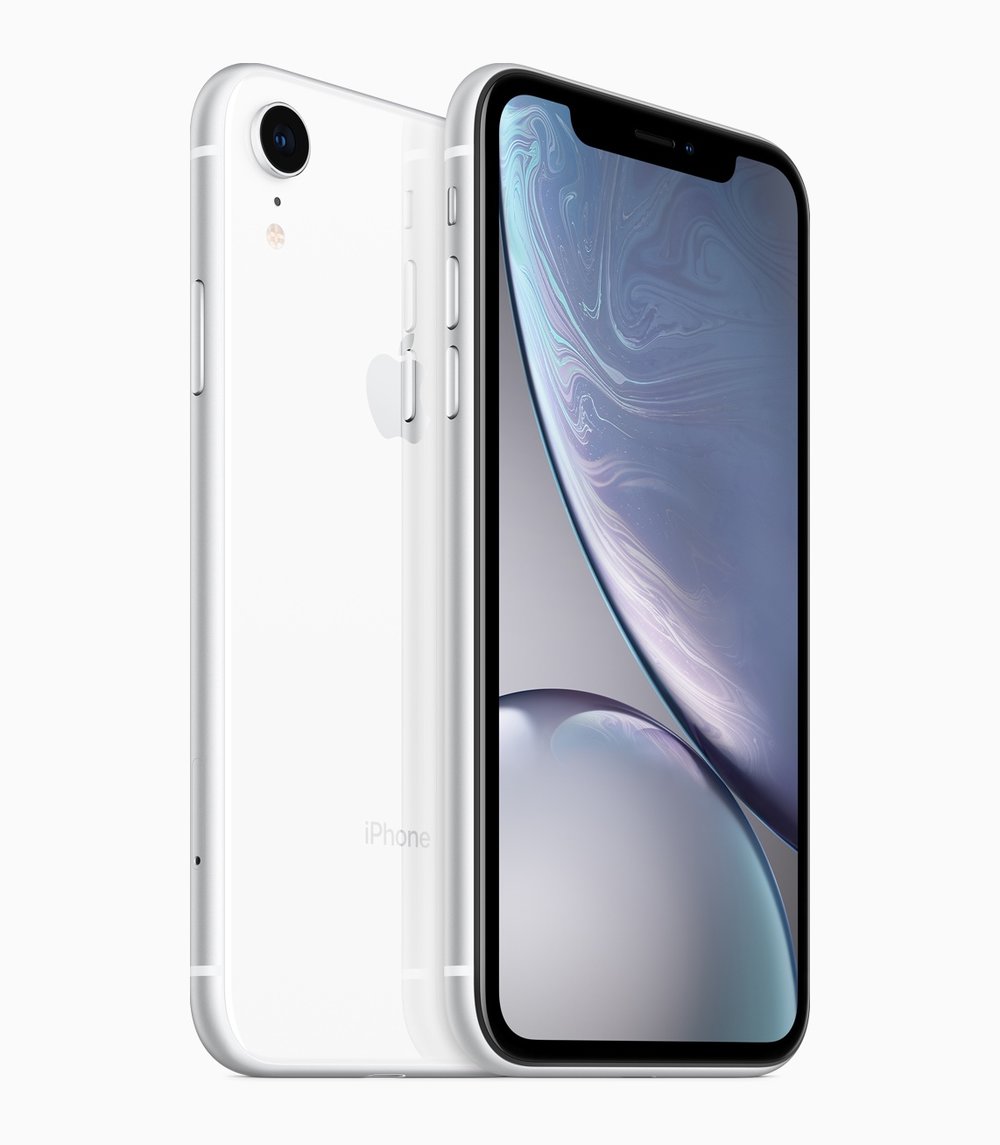Yes, I am on a cruise ship in the Atlantic Ocean, so my coverage of today’s Apple Event is going to be…sporadic. But as I get news, I’ll update this post — just keep coming back and refreshing this post to get the latest news.

Apple Watch 4
As expected, there’s a new Apple Watch. It has a new crown, a 50% louder speaker so that you can actually hear Siri respond. They’ve placed the microphone on the other side of the watch to reduce feedback. The back of the Watch is now all black using a combination of ceramic and sapphire. The entire Watch is now more radio-transparent for better phone and data connectivity.
Vapor Face – you bring it up to your face to do breathing at any time. The screens are now bigger, but the entire Watch is thinner. Motion sampling is now up to 8 times faster, which now allows Apple Watch 4 to detect slips, trips and falls. In fact, if it detects a fall, it will offer to make an emergency call for you. If you don’t move within a minute after a detected fall, it will make the call.
Think that’s impressive? The new Watch also helps to do more about possible heart failures. This is the first over-the-counter electrocardiogram (ECG) device. It can detect and warn wearers of both slow heart conditions (heart not moving enough blood) and atrial fibrillation. Running an ECG takes just 30 seconds on the watch, and the results are stored in a PDF in the Health app so that they can be shared with a doctor.
Speaking of doctors, Dr. Ivor Benjamin of the American Heart Association was on hand and said that the Apple Watch is “changing the way we are practicing medicine”. The Watch has received FDA clearance — something that is incredibly important.
Battery life is said to be 18 hours, which is what I currently get with an Apple Watch Series 3. Apparently the GPS tracking battery life is quite a bit longer — now listed as six hours. Three aluminum finishes: space gray, silver and black. Three stainless steel finishes: “gold stainless”, matte black and polished chrome. All current bands will work with the Series 4.
The Apple Watch Series 3 remains on the market with a starting price of $279. Series 4 will run $399, $499 for the cellular version, and it will be available for pre-order on September 21. watchOS 5 will be available on September 17.

iPhone Xs and iPhone Xs Max
Apple CEO Tim Cook started off this segment of the event by talking up the satisfaction numbers for the iPhone X — which are incredibly high. The company then said what they say every year: “This is the most advanced iPhone we’ve ever created”. Duh.
It comes in three new finishes and really looks nice: space gray, silver and gold. There’s now IP68 water ingress protection, which means (according to Apple Senior VP of Worldwide marketing Phil Schiller) that you can actually spill a beer on it with no issues. That’s good for this tech writer… They also tested with orange juice and wine.
The Max is the expected 6.5-inch OLED display version of the iPhone Xs (which is pronounced “Ten-Ess”, by the way). Both of the phones have a 458 pixel-per-inch Super Retina OLED display, A side by side comparison shows that the 6.5-inch iPhone Xs Max — with a bigger screen than the iPhone 8 Plus — is still the same size as the iPhone 8 Plus.
More about the screens: they still have 3D Touch, True Tone, wide color support, and they refresh at 120hz. As my former podcast partner Ross Rubin reported on Twitter, the iPhone Xs Max is why there was no “doubt left about why Apple killed the iPad mini”. By the way, the iPhone Xs Max has split-view mode like an iPad.
Face ID is now much faster (it really wasn’t slow on the iPhone X). So, what’s powering the iPhone Xs? The all-new A12 Bionic system-on-a-chip, by the way, is the first 7nm process chip to make it to market and contains 6.9 billion transistors. The neural engine now gets its own 8-core block! Last year’s A11 could do 600 billion operations per second; the A12 can do 5 trillion.
Of course, all that power is for naught if the iPhone Xs has lousy battery life, so this is also a much more efficient chip. I loved Michael Gartenberg’s twitter comment – “The A12 chip sounds like it’s 500 lines of code short of becoming sentient.”
Storage is improved as well: you want 512GB of storage on your iPhone? You can get it!
Details of the A12:
• 7nm
• 6.9B transistors
• 6 CPU cores
• 4 GPU cores
• 8 “neural” cores
• 5 trillion ops/sec
• 512GB addressable storage
OK, what about the camera? The iPhone Xs camera is two-camera like that of the original iPhone X. But guess what? Now there’s an all new image signal processor in that A12 system-on-a-chip. So now the Neural Engine works with that image signal processor to detect the type of scene the camera is looking at, do facial landmarking, and segmentation. It does trillions of these operations for every photo.
Apparently the camera sensors are improved, but Phil Schiller noted that the major camera improvements come from processing power. There’s a new Smart HDR feature for those of you who love High Dynamic Range photography. Smart HDR features zero shutter lag, a four-frame buffer, secondary interlays, and then melds nine photos into one perfect photo.
Like Light Field photography, you can now adjust the depth of field of a Portrait mode photo AFTER shooting it. This is groundbreaking stuff, folks.

If you use your iPhone Xs for taking video you’ll be impressed as well. It now features a 2X faster sensor, and four microphones that means you can capture amazing stereo sound for your videos.
Even more big news. The iPhone Xs has 30 minutes more battery life than the iPhone X, while the iPhone Xs Max adds 90 minutes more life. If you want different data plans for different countries or areas, you can — this is a dual-SIM device. One of the SIMs is an e-SIM like that used in the iPad and Apple Watch, while the other is a physical SIM. In China, a special version of the iPhone Xs will have two actual physical SIM trays.

Next up, the iPhone Xr (pronounced Ten-Are). It comes in many colors – white, black, blue, coral, yellow and a Product (RED) version. Since it uses a nice low-cost LCD display, it should be cheaper to produce. It has IP67 water ingress protection; not as good as the iPhone Xs but you get what you pay for, dude. They call this a Liquid Retina display.
The Xr doesn’t come with 3D Touch but does have Haptic Touch, which is similar to the MacBook Pro trackpad. The phone has Face ID and the same front camera system as the iPhone X. The screen is 6.1 inches diagonally, making the screen bigger than that of an iPhone 8 Plus in a smaller package.

Even with a cheaper display, the Xr uses the same A12 Bionic chip as the iPhone Xs models. That processing power has been put to use creating a single-lens Portrait mode. Battery life on the iPhone Xr is about 90 minutes longer than the iPhone 8 Plus.
Pricing of the Xr begins at $749 (for 64GB), while the Xs starts at $999 and the Xs Max at $1099. As sales of the iPhone X have shown in the past year, price doesn’t appear to be a barrier to sales of Apple smartphones. The iPhone 7 and 8 also remain in the iPhone lineup.
So, the bottom line is that the iPhone Xs will come in 64/256/512GB versions starting at $999, the iPhone Xs Max will come in 64/256/512GB models starting at $1099, and the iPhone Xr will be in 64/256/512GB versions starting at $749. All will be available on September 21.
